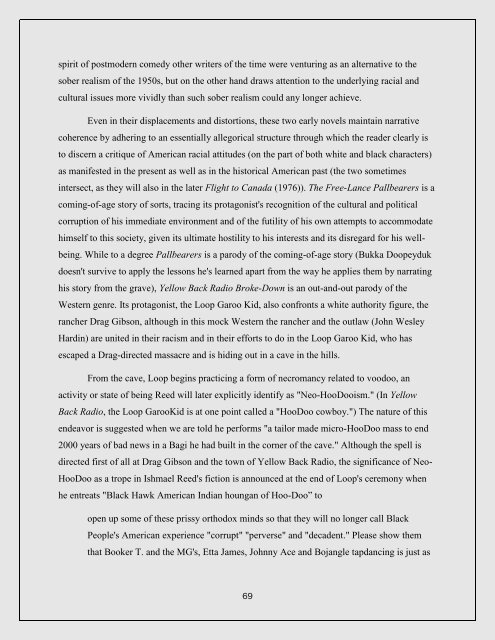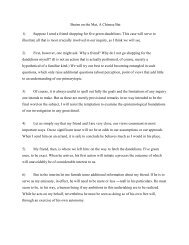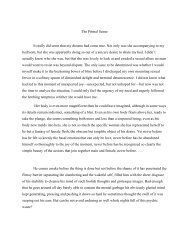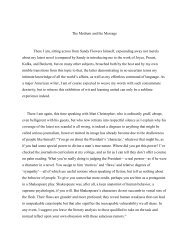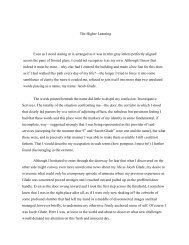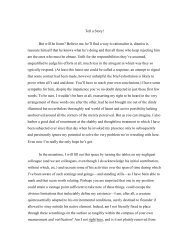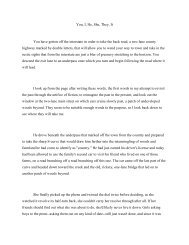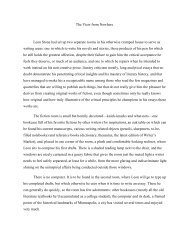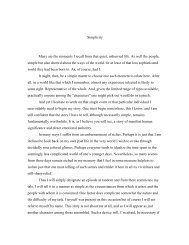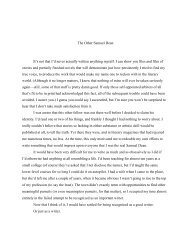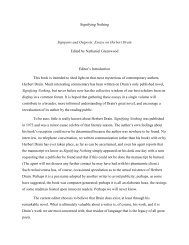APF
Create successful ePaper yourself
Turn your PDF publications into a flip-book with our unique Google optimized e-Paper software.
spirit of postmodern comedy other writers of the time were venturing as an alternative to the<br />
sober realism of the 1950s, but on the other hand draws attention to the underlying racial and<br />
cultural issues more vividly than such sober realism could any longer achieve.<br />
Even in their displacements and distortions, these two early novels maintain narrative<br />
coherence by adhering to an essentially allegorical structure through which the reader clearly is<br />
to discern a critique of American racial attitudes (on the part of both white and black characters)<br />
as manifested in the present as well as in the historical American past (the two sometimes<br />
intersect, as they will also in the later Flight to Canada (1976)). The Free-Lance Pallbearers is a<br />
coming-of-age story of sorts, tracing its protagonist's recognition of the cultural and political<br />
corruption of his immediate environment and of the futility of his own attempts to accommodate<br />
himself to this society, given its ultimate hostility to his interests and its disregard for his wellbeing.<br />
While to a degree Pallbearers is a parody of the coming-of-age story (Bukka Doopeyduk<br />
doesn't survive to apply the lessons he's learned apart from the way he applies them by narrating<br />
his story from the grave), Yellow Back Radio Broke-Down is an out-and-out parody of the<br />
Western genre. Its protagonist, the Loop Garoo Kid, also confronts a white authority figure, the<br />
rancher Drag Gibson, although in this mock Western the rancher and the outlaw (John Wesley<br />
Hardin) are united in their racism and in their efforts to do in the Loop Garoo Kid, who has<br />
escaped a Drag-directed massacre and is hiding out in a cave in the hills.<br />
From the cave, Loop begins practicing a form of necromancy related to voodoo, an<br />
activity or state of being Reed will later explicitly identify as "Neo-HooDooism." (In Yellow<br />
Back Radio, the Loop GarooKid is at one point called a "HooDoo cowboy.") The nature of this<br />
endeavor is suggested when we are told he performs "a tailor made micro-HooDoo mass to end<br />
2000 years of bad news in a Bagi he had built in the corner of the cave." Although the spell is<br />
directed first of all at Drag Gibson and the town of Yellow Back Radio, the significance of Neo-<br />
HooDoo as a trope in Ishmael Reed's fiction is announced at the end of Loop's ceremony when<br />
he entreats "Black Hawk American Indian houngan of Hoo-Doo” to<br />
open up some of these prissy orthodox minds so that they will no longer call Black<br />
People's American experience "corrupt" "perverse" and "decadent." Please show them<br />
that Booker T. and the MG's, Etta James, Johnny Ace and Bojangle tapdancing is just as<br />
69


